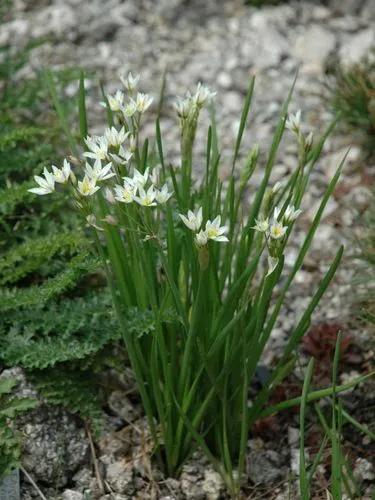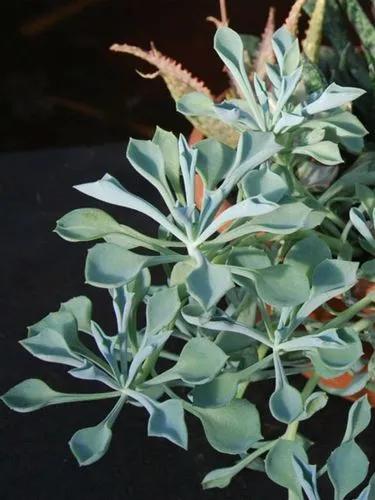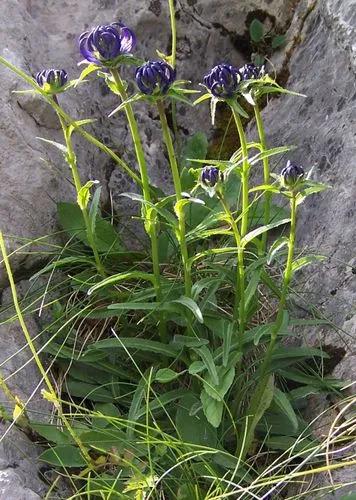They are perennial herbaceous plants which exhibit a multitude of physiological and morphological differences making this a diverse genus. Having native habitats that vary from being epiphytic and saxicolous, species have certain adaptations, such as root systems designed to anchor to other plants or substrates, and modified trichomes for water and nutrient intake. Some of the species, like the majority of bromeliaceae, grow as funnel bromeliads, with a compressed stem axis. The leaves are then close together in rosettes, and cover the lower areas of the leaves, forming a funnel for collecting water. These leaf rosettes, a common physical characteristic in Tillandsia species, collect nutrients and water. The flowers typically involve bright, vibrant colors, with blooms or inflorescences produced on a stalk or several stalks. The flower's color varies greatly; red, yellow, purple and pink flowers exist in this genus, and multicolored flowers are known. The bright colors attract pollinators. An air plant's foliage may also change color when it blooms, also attracting pollinators. The hermaphrodite flowers are threefold with double perianth. The three free sepals are symmetrical and pointed. The seeds have a "parachute" similar to the dandelion. Common pollinators of this genera include moths, hummingbirds and, more recently recognized, bats.
Brom Tilly Care
Tillandsia



How to Care for the Plant

Water

Healthy bromeliads come from being taken care of well. ... Remember that the water can be rainwater, filtered water or tap water, that watering bromeliads should be done when the soil is dry; and that how to water a bromeliad is not much different than watering any other houseplant.

Pruning

Cut back broom when it has finished flowering, shortening the shoots that have flowered to within 5cm/2in of the old wood. Do not cut into this older wood. It will not sprout new growth.

Fertilizer

Bromeliad plant care is easy and requires no special tools or fertilizers. Feed the plants with a half strength fertilizer every month in the growing season.

Sunlight

Generally, if your bromeliad has soft, flexible leaves, it will prefer lower lighting levels. While a bromeliad possessing hard or stiff leaves will most likely enjoy bright, indirect light.

Soil

New gardeners learning how to grow bromeliads will find that the plant doesn't need deep pots or thick potting soils.

Temperature

Bromeliads prefer temperatures between 55 and 80 degrees Fahrenheit. Though some cold-hardy types can survive temperatures down to 20 degrees, they should generally not be exposed to temperatures under 40 degrees. 2 They grow well indoors at humidity levels between 40 and 60 percent.

Additional

The ASPCA has declared bromeliads safe and non toxic to cats and dogs.

Popularity

47 people already have this plant 11 people have added this plant to their wishlists
Discover more plants with the list below
Related articles






